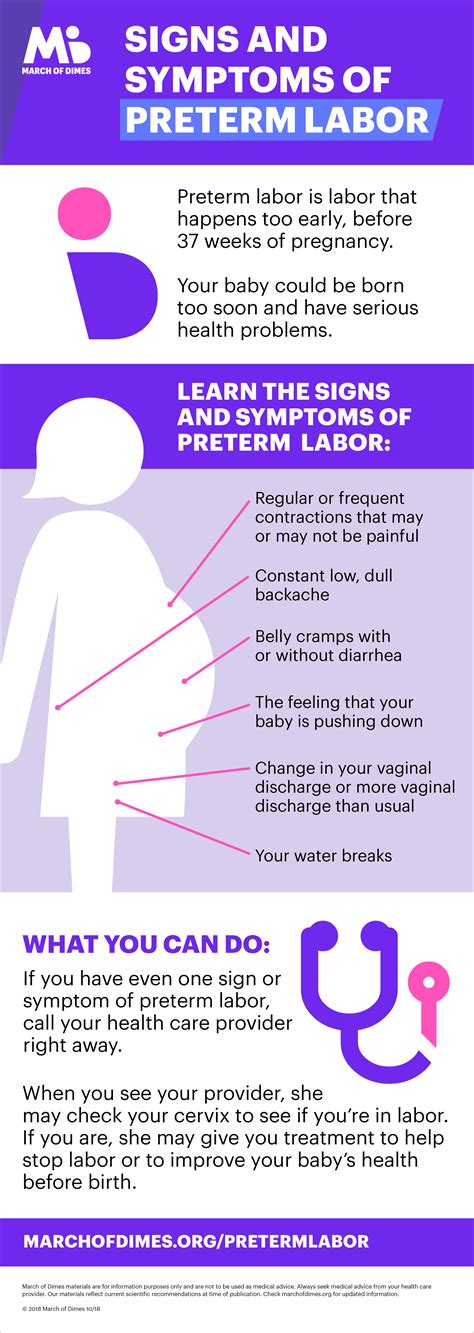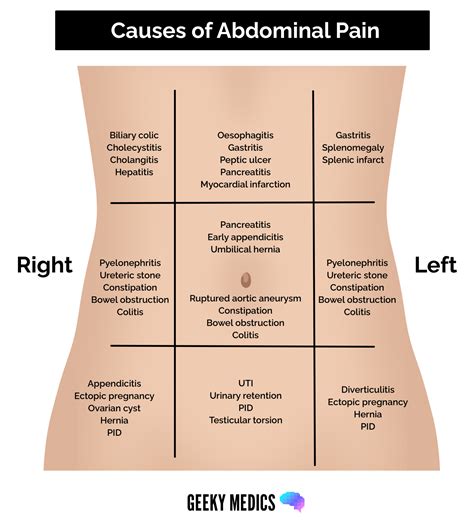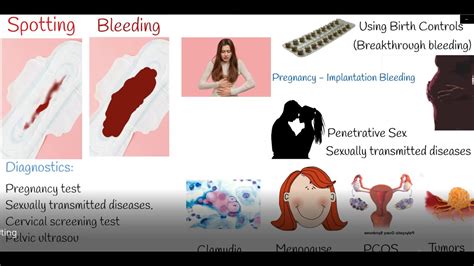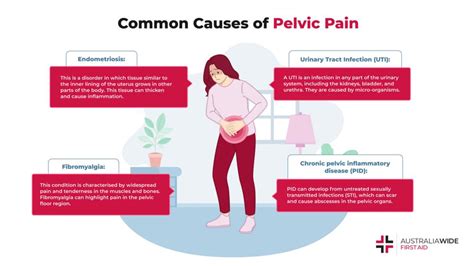Intro
Recognize the warning signs of preterm labor to ensure a healthy pregnancy. Learn the 8 crucial indicators, including cervical changes, uterine contractions, and vaginal bleeding. Understand the risks and symptoms of premature birth, and discover when to seek medical attention to prevent complications and ensure the best possible outcome for you and your baby.
Preterm labor is a serious concern for many expectant mothers, and being aware of the signs can make a significant difference in seeking timely medical attention. Preterm labor, also known as premature labor, occurs when the body prepares for childbirth before the 37th week of pregnancy. This can be a challenging and unpredictable experience for mothers-to-be, but knowing the warning signs can help prevent complications and ensure the best possible outcome for both the mother and the baby.
Every pregnancy is unique, and while some women may experience no symptoms at all, others may exhibit several signs of preterm labor. It's essential to be aware of these signs and to seek medical attention immediately if you suspect that you're going into preterm labor. In this article, we'll discuss eight signs of preterm labor that you should know, as well as provide guidance on what to do if you experience any of these symptoms.

1. Frequent Contractions
One of the most common signs of preterm labor is frequent contractions. If you're experiencing contractions that are:
- Regular and consistent (e.g., every 10-15 minutes)
- Increasing in intensity
- Lasting longer than 30 seconds
- Accompanied by a change in the shape of your cervix
Seek medical attention immediately. Your healthcare provider may perform a vaginal exam to check for cervical dilation and effacement.

What to Do:
- Call your healthcare provider or go to the hospital if you're experiencing frequent contractions.
- Try to time your contractions to provide your healthcare provider with more information.
2. Cramping and Abdominal Pain
Cramping and abdominal pain are common symptoms of preterm labor. If you're experiencing:
- Severe cramping or abdominal pain
- Pain that radiates to your lower back or thighs
- Pain that's accompanied by vaginal bleeding or spotting
Seek medical attention immediately.

What to Do:
- Call your healthcare provider or go to the hospital if you're experiencing severe cramping or abdominal pain.
- Try to stay calm and comfortable until you receive medical attention.
3. Vaginal Bleeding or Spotting
Vaginal bleeding or spotting can be a sign of preterm labor. If you're experiencing:
- Heavy vaginal bleeding or spotting
- Bleeding that's accompanied by contractions or abdominal pain
Seek medical attention immediately.

What to Do:
- Call your healthcare provider or go to the hospital if you're experiencing vaginal bleeding or spotting.
- Wear a pad or sanitary napkin to absorb the bleeding.
4. Loss of Mucous Plug
The mucous plug is a thick, jelly-like substance that blocks the cervix during pregnancy. If you're experiencing:
- A sudden, thick discharge of blood-tinged mucus
- A discharge that's accompanied by contractions or abdominal pain
Seek medical attention immediately.

What to Do:
- Call your healthcare provider or go to the hospital if you're experiencing a sudden, thick discharge of blood-tinged mucus.
- Try to stay calm and comfortable until you receive medical attention.
5. Back Pain
Back pain is a common symptom of preterm labor. If you're experiencing:
- Severe back pain that radiates to your abdomen or thighs
- Back pain that's accompanied by contractions or abdominal pain
Seek medical attention immediately.

What to Do:
- Call your healthcare provider or go to the hospital if you're experiencing severe back pain.
- Try to stay calm and comfortable until you receive medical attention.
6. Pelvic Pressure
Pelvic pressure is a common symptom of preterm labor. If you're experiencing:
- A feeling of pressure or tightness in your pelvis or vagina
- Pressure that's accompanied by contractions or abdominal pain
Seek medical attention immediately.

What to Do:
- Call your healthcare provider or go to the hospital if you're experiencing pelvic pressure.
- Try to stay calm and comfortable until you receive medical attention.
7. Abnormal Vaginal Discharge
Abnormal vaginal discharge can be a sign of preterm labor. If you're experiencing:
- A sudden, thick, or foul-smelling vaginal discharge
- Discharge that's accompanied by contractions or abdominal pain
Seek medical attention immediately.

What to Do:
- Call your healthcare provider or go to the hospital if you're experiencing abnormal vaginal discharge.
- Wear a pad or sanitary napkin to absorb the discharge.
8. Fever
Fever can be a sign of infection, which can increase the risk of preterm labor. If you're experiencing:
- A fever over 100.4°F (38°C)
- Fever that's accompanied by contractions or abdominal pain
Seek medical attention immediately.

What to Do:
- Call your healthcare provider or go to the hospital if you're experiencing a fever over 100.4°F (38°C).
- Try to stay calm and comfortable until you receive medical attention.
If you're experiencing any of these signs of preterm labor, it's essential to seek medical attention immediately. Your healthcare provider may perform a series of tests to determine if you're in preterm labor and develop a plan to ensure the best possible outcome for you and your baby.
What is preterm labor?
+Preterm labor, also known as premature labor, occurs when the body prepares for childbirth before the 37th week of pregnancy.
What are the causes of preterm labor?
+The causes of preterm labor are not always clear, but may include infection, cervical insufficiency, and multiple pregnancy.
How can I prevent preterm labor?
+While it's not possible to completely prevent preterm labor, you can reduce your risk by maintaining a healthy pregnancy, getting regular prenatal care, and avoiding certain risk factors.
What are the risks of preterm labor?
+Preterm labor can increase the risk of complications for both the mother and the baby, including respiratory distress syndrome, neonatal sepsis, and cerebral palsy.
How is preterm labor treated?
+Treatment for preterm labor may include bed rest, hydration, and medication to slow down contractions and reduce the risk of complications.
We hope this article has provided you with valuable information about the signs of preterm labor. Remember, if you're experiencing any of these symptoms, it's essential to seek medical attention immediately. Don't hesitate to share this article with your loved ones or friends who may be expecting a baby. If you have any questions or concerns, feel free to comment below or reach out to your healthcare provider.
